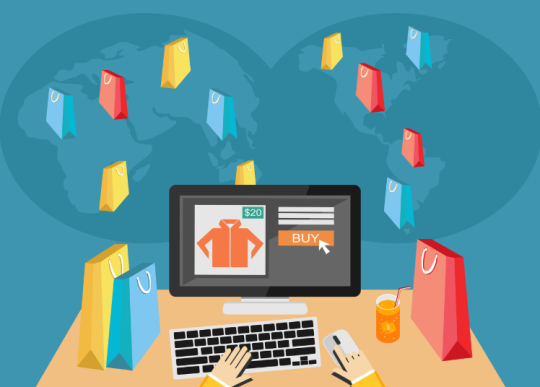
It’s no secret to anyone following retail that e-Commerce is evolving
rapidly (along with the store experience), particularly as the channels
continue to converge. Industry experts believe retailers will need to deepen
their understanding and develop their capabilities in six key areas within
e-Commerce: AI/Machine Learning,
Personalization and Customer Engagement, Next-Generation Technologies,
Global Commerce, Omnichannel and the Last Mile.
The RTP editors share their thoughts on the trends
and insights revealed by the 16 experts cited in the E-Commerce
Innovations Special Report.
Debbie Hauss, Editor-in-Chief: The continued transformation of retail as-we-know-it is a key strategic
area retailers must be sure to stay focused on. As stated by Christina
Anderson, Associate Director of e-Commerce and Digital at Kantar: “To position
themselves for this retail future, key stakeholders must understand the
fluidity of today’s shopper journey and uncover new ways to influence and
convert shoppers in a connected commerce world.” The retail experience must
be transformed from all perspectives: Pureplay e-Commerce brands should
consider opening physical locations; traditional brick-and-mortar stores need
to solidify a consistent cross-channel experience, while updating in-store
engagement with endless aisle, events and digital technology. Retailers also
need to focus on how AI/machine learning and social commerce are impacting
customer acquisition and retention.
Adam Blair, Executive Editor: This quote from Jeffrey Neville of
BRP beautifully summed up one of my biggest gripes with e-Commerce: the lack
of communication from retailers when something goes wrong during the
last mile of product delivery: “After a customer clicks ‘buy,’ they
enter a phase of uncertainty, where they are unsure whether their product will
arrive on time or whether it will appear in one piece.” I wrote about
the saga of the late-arriving DVD a few months ago, and how
just a few more messages from the retailer, and some improved follow-through,
would have turned a bad customer experience into a good one. Neville’s quote
reminded me that retailers need to make sure they can back up their promises —
whether that’s two-day delivery or having key products in-stock — and almost as
important, have backup plans and communication protocols in place when they
occasionally can’t keep those promises. Uncertainty can be worse than
disappointment.
Glenn Taylor, Senior Editor: Given the recent reports that Instagram
is planning its own shopping app and Snapchat showed that it is capable
of bringing visual search to the table with its Amazon partnership,
I’m interested to see how social shopping will continue to evolve in 2019. Erik
Reynolds of Loot Crate indicated
that Facebook is the most effective social and acquisition channel for the
company right now, but also acknowledged the continued migration of Millennials
onto Snapchat and Instagram. As a subscription box company, Loot Crate must
take advantage of the visual aspects of its brand as much as possible, even if
just to drive awareness to the different kind of offerings the retailer provides.
If the company continues to find a way to migrate its micro-influencers onto
these platforms, they will surely build more authentic relationships with the
viewers and provide a better blueprint for other industry players to follow.
Bryan Wassel, Associate Editor: While the challenges of the last mile
are on every retailer’s mind, not everyone is considering just how multi-faceted
a problem the final steps of delivery can pose. It’s not just a matter of
rural versus urban, but the cultures of different cities themselves: “The
challenge will be finding ways to cater to the distinct and diverse Last Mile
whims of consumers across New York, Los Angles, London, Barcelona, Milan,
Hamburg, Moscow and other great cities,” said Andrea Szasz of A.T. Kearney on this
topic. Personalization can apply regionally as well as individually, and
retailers need to understand the broader expectations of shoppers in New York
compared to Tokyo. Different infrastructures and cultures mean different cities
may expect different levels and costs of service when it comes to e-Commerce.






